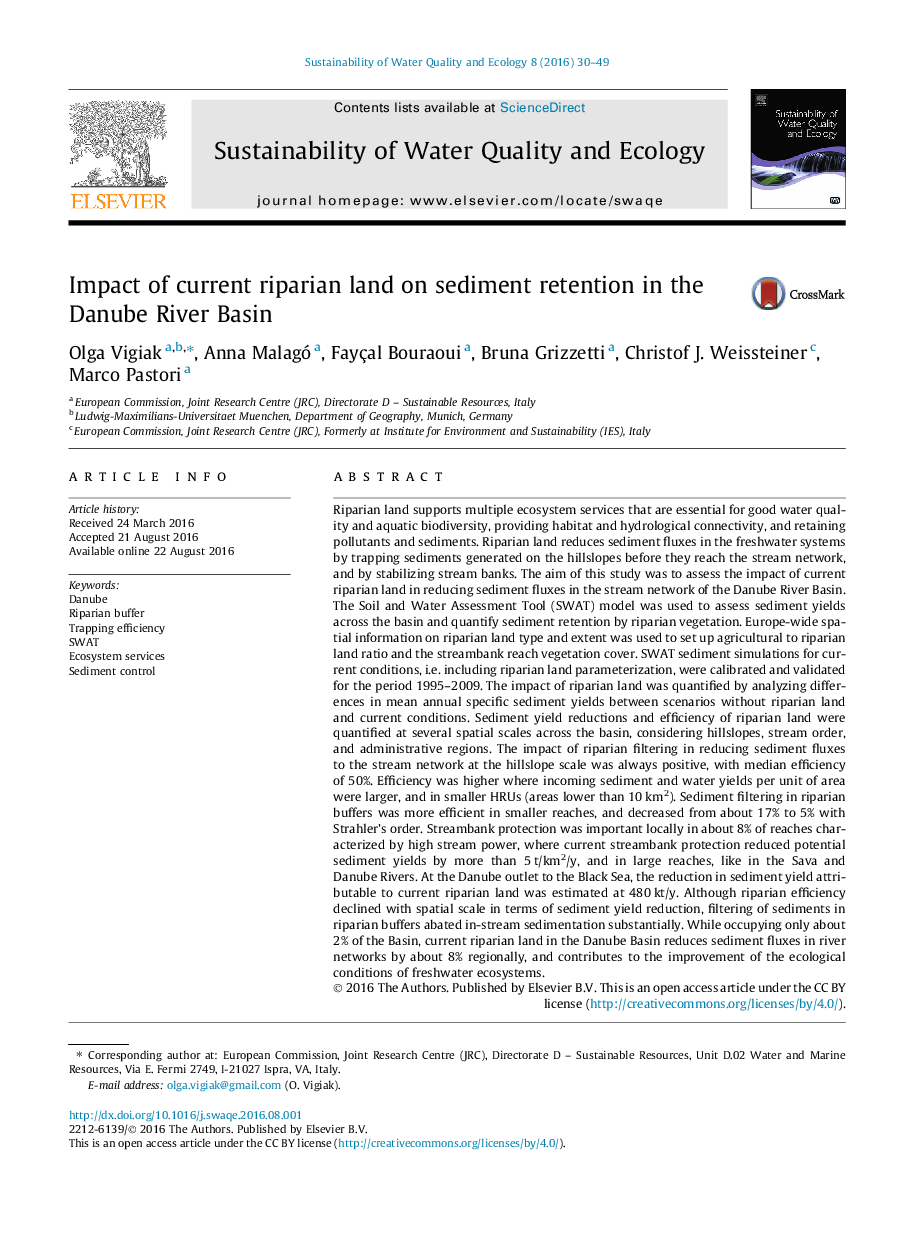| کد مقاله | کد نشریه | سال انتشار | مقاله انگلیسی | نسخه تمام متن |
|---|---|---|---|---|
| 5119028 | 1485800 | 2016 | 20 صفحه PDF | دانلود رایگان |
- Current extent of riparian land was included in SWAT set-up.
- Median riparian filtering efficiency declined from local to regional scale.
- Streambank stabilization was important in large reaches (Strahler's order > 3).
- Current riparian land reduces sediment yields at the Danube mouth by 480Â kt/y.
Riparian land supports multiple ecosystem services that are essential for good water quality and aquatic biodiversity, providing habitat and hydrological connectivity, and retaining pollutants and sediments. Riparian land reduces sediment fluxes in the freshwater systems by trapping sediments generated on the hillslopes before they reach the stream network, and by stabilizing stream banks. The aim of this study was to assess the impact of current riparian land in reducing sediment fluxes in the stream network of the Danube River Basin. The Soil and Water Assessment Tool (SWAT) model was used to assess sediment yields across the basin and quantify sediment retention by riparian vegetation. Europe-wide spatial information on riparian land type and extent was used to set up agricultural to riparian land ratio and the streambank reach vegetation cover. SWAT sediment simulations for current conditions, i.e. including riparian land parameterization, were calibrated and validated for the period 1995-2009. The impact of riparian land was quantified by analyzing differences in mean annual specific sediment yields between scenarios without riparian land and current conditions. Sediment yield reductions and efficiency of riparian land were quantified at several spatial scales across the basin, considering hillslopes, stream order, and administrative regions. The impact of riparian filtering in reducing sediment fluxes to the stream network at the hillslope scale was always positive, with median efficiency of 50%. Efficiency was higher where incoming sediment and water yields per unit of area were larger, and in smaller HRUs (areas lower than 10Â km2). Sediment filtering in riparian buffers was more efficient in smaller reaches, and decreased from about 17% to 5% with Strahler's order. Streambank protection was important locally in about 8% of reaches characterized by high stream power, where current streambank protection reduced potential sediment yields by more than 5Â t/km2/y, and in large reaches, like in the Sava and Danube Rivers. At the Danube outlet to the Black Sea, the reduction in sediment yield attributable to current riparian land was estimated at 480Â kt/y. Although riparian efficiency declined with spatial scale in terms of sediment yield reduction, filtering of sediments in riparian buffers abated in-stream sedimentation substantially. While occupying only about 2% of the Basin, current riparian land in the Danube Basin reduces sediment fluxes in river networks by about 8% regionally, and contributes to the improvement of the ecological conditions of freshwater ecosystems.
Journal: Sustainability of Water Quality and Ecology - Volume 8, November 2016, Pages 30-49
